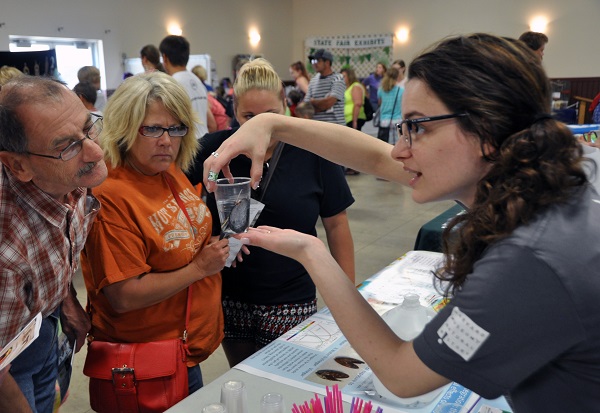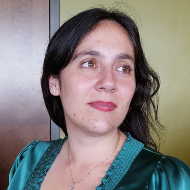Our fellow exhibitors at the Linn County Fair were busy setting up their booths. As I set out our boxes, one of my interns approached me.
“Where have you brought us?” she demanded in a whisper, a wild look in her eyes.
I looked around. Our booth was conveniently sandwiched between not one but two anti-drug exhibits. On the other side of the hall, an astonishing number of people were preparing to distribute an equally astonishing number of apparently competing Bibles.
“Don’t worry!” I replied. “We'll be even more fun than not doing drugs!”
Frankly, we were all a little surprised by the Linn County Fair. This annual event is an hour away from our home base in Iowa City, but it promised a very large crowd and they made a special effort to invite us. Although I had never visited these fairgrounds before, I eagerly accepted the opportunity. This year’s theme: "Country Roots and Cowboy Boots".
I expected to work with a large crowd of people who were very culturally different from me and my volunteers. And that's exactly what happened. The parking lot quickly filled with pickup trucks. Trump bumper stickers were, while not in the majority, certainly there to be seen. Many cowboy hats were worn, along with work clothes that had been purchased with absolutely no ironic intent. A strong majority of the people we met, perhaps as much as 75%, sported religious symbols or otherwise presented as openly Christian. At least 30% of the people we met did not have email accounts. In other words, not your typical crowd of NCSE supporters.
But definitely a cool place to be presenting not just on climate change, but also on evolution! A two-for-one special!
The day was beautiful. The break in the heat wave brought out enormous crowds. We saw thousands of people and had many fascinating interactions.
With home schooling moms, who were excited to learn about education materials they could borrow from the University of Iowa Natural History Museum. They took NCSE flyers to share with their friends.
With religious leaders, whose kids would not let them leave the exhibit until they did every possible activity.
With Mennonite guys of a certain age with imposing facial hair, who wanted to tell us about mammoth teeth they found in the old rock quarry.
With an outreach coordinator for Iowa State-who expressed evident enjoyment of our activities. When I asked him if we could work together to develop exhibitions in his community, he was hesitant. This material was so controversial. I asked him to look at the crowd. They were loving it! What could he do but agree? We set up a meeting.
We had one encounter with a climate change denier. He turned out to be one of the fair organizers who was testing to see if we were jerks. In short, how would we respond to people whose beliefs differed from our own? He invited us to come back next year.
It was a wonderful, exciting, high-energy experience. This was exactly the kind of population that our research suggests faces serious struggles with covert threats to science education. And I got the distinct feeling that this population was dealing with those covert threats. Many of the people I interacted with displayed the kind of excitement that comes from slightly illicit activity. I was ready to indulge their appetites.
Many of the people I interacted with had very little knowledge of their region’s natural history. Perhaps half of the adults did not know, for example, that our land was once covered by a great sea. Children, interestingly, were all over this science fact, with over 80% of kids excitedly telling me they already learned that in school. Not a single person made the slightest attempt to fight with me about evolution. People wanted to look at the pictures we had of what Iowa was like at different times over the last 300 million years. People wanted to see and touch the fossils that had been found in Iowa. People wanted to know how we were sure these fossils were so ancient, and they handled them reverently. People laughed when they learned how many important specimens have been found on Iowa farms.

I took some breaks from talking to people for hours and hours to walk around the exhibition hall. Our booth had the largest crowds in the hall, and some of the most engaged visitors. People were as excited about us as they were for the booth giving away balloon animals—serious high praise.
Of all the populations I have worked with, this was the one I thought most likely to generate conflict. And there was none. There were just people. Curious people who were maybe a little concerned we were going to be rude to them.
The whole experience makes me wonder how much of the controversy about science education in our country is manufactured. And it makes me wonder how much of an atmosphere of covert educational threat can arise from one or two bullies in a community. Our day at the Linn County Fair provided copious evidence that people would really rather learn than fight.
Check out our experience at the fair in this video, shot and edited by Nick Fetty, a longtime supporter and volunteer who also took the picture in this article.

